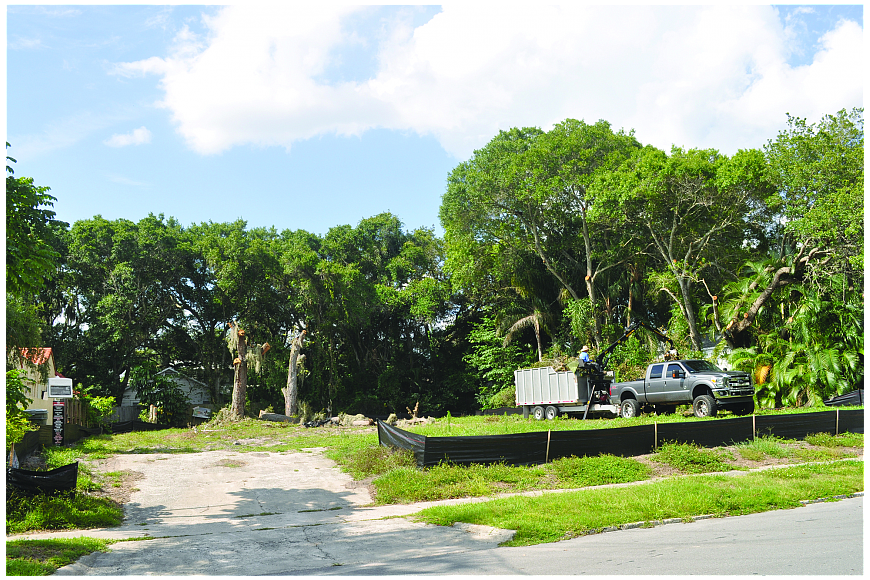- April 20, 2024
-
-
Loading

Loading

After officials spent 18 months to make 13 revisions to the city’s tree regulations, the Planning Board came to a conclusion during its April 12 meeting: Nobody is happy with the changes.
“It seems like everybody’s not satisfied at this point — both residentially and from a development perspective,” said Tim Litchet, the city’s director of neighborhood and development services.
During a two-hour meeting at which the board considered another proposal to change the tree ordinance, neighborhood leaders and building professionals shared their concerns. Residents say the ordinance still isn’t effectively protecting trees during a wave of construction.
The Planning Board was discussing a regulation that would require builders to replace removed trees inch-for-inch with replacement trees, based on trunk diameter at chest height, a common tree measurement. If a developer were to remove a 21-inch tree, for example, it would be required to plant three 7-inch trees, or some similar variant.
The measure was designed to address residents’ concerns, but a series of speakers at the Planning Board were critical of the proposal as onerous.
“What you’re doing is stymying growth,” said David Smith, a local landscape architect.
The board voted 4-1 to recommend that the City Commission reject the proposed changes, but there were questions about what the next steps will be. Planning Board member Eileen Normile recommended the creation of a temporary tree advisory board, wanting to keep the issue on the forefront of someone’s agenda.
“If we don’t do that, my fear is that it’ll disappear,” Normile said.
If the city pursues that option, Planning Board Chairman David Morriss said it should try to get residents with different backgrounds involved. He said both neighborhood members and developers should help craft the regulations, because he thought an attempt to accommodate a smaller group led to the rejected ordinance revision.
Vice Chairman Patrick Gannon, who helped write the rejected changes, said the city still must prioritize accommodating the loss of trees from residential areas.
“Testimony here has addressed the impact on the neighborhoods, in terms of decimating too many trees in certain areas,” he said.
Litchet expressed some caution about the concept of overhauling the tree ordinance, particularly as the city staff is in the process of writing a new zoning code. Still, the Planning Board voted 4-1 to recommend the creation of the tree advisory board.
“It looks like tree ordinances need a de novo look,” Normile said. “They need to be looked at from the beginning, not just Band-Aids.”